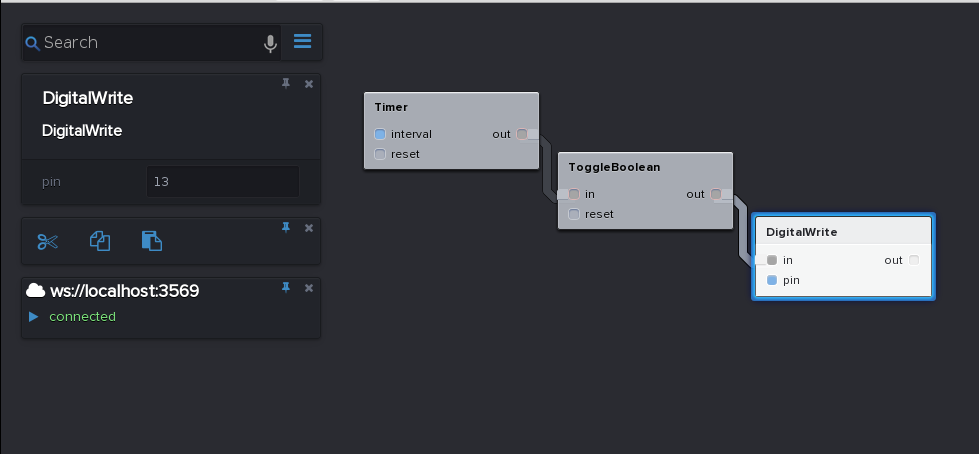Two months after MicroFlo 0.1.0, another important milestone has been reached. This release brings a basic visual programming environment and initial support for all major desktop platforms (Win/OSX/Linux). The project is still very much experimental, but it is now starting to demonstrate potential advantages over traditional Arduino programming.
Official release notes and announcement here.
The start of something visual

The “Hello World” adopted from Arduino, a program that blinks the built-in LED a couple of times per second. Pressing Play (>) uploads the program to the Arduino using MicroFlo.
The IDE shown is NoFlo UI, a visual programming environment which can also be used to program JavaScript for the browser and Node.js using the NoFlo runtime. This project is developed by Henri Bergius and rest of the NoFlo team. For more details about the NoFlo IDE project, check their latest update and follow their Kickstarter project.
Talk
At Piksel 2013 in Bergen, I also presented MicroFlo for the first time, to an audience of mostly new media and experimental sound artists. The talk goes into detail about the motivations behind the project, from the quite practical to the more philosophical considerations. Not my most coherent talk, but it gives some insight.
Next
For the next milestone, MicroFlo 0.3, several things are already planned. Focus is mostly on practical improvements to the system, but I also hope to complete prototype support for “heterogeneous FBP”: Allowing to program systems consisting of both host computer and microcontroller programs in a unified manner using NoFlo+MicroFlo.
I am also planning a MicroFlo workshop at Bitraf some time in December and to demo the project at Maker Faire Oslo.
In the meantime, you can get started with MicroFlo for Arduino by following this tutorial. Feedback and contributions welcomed!